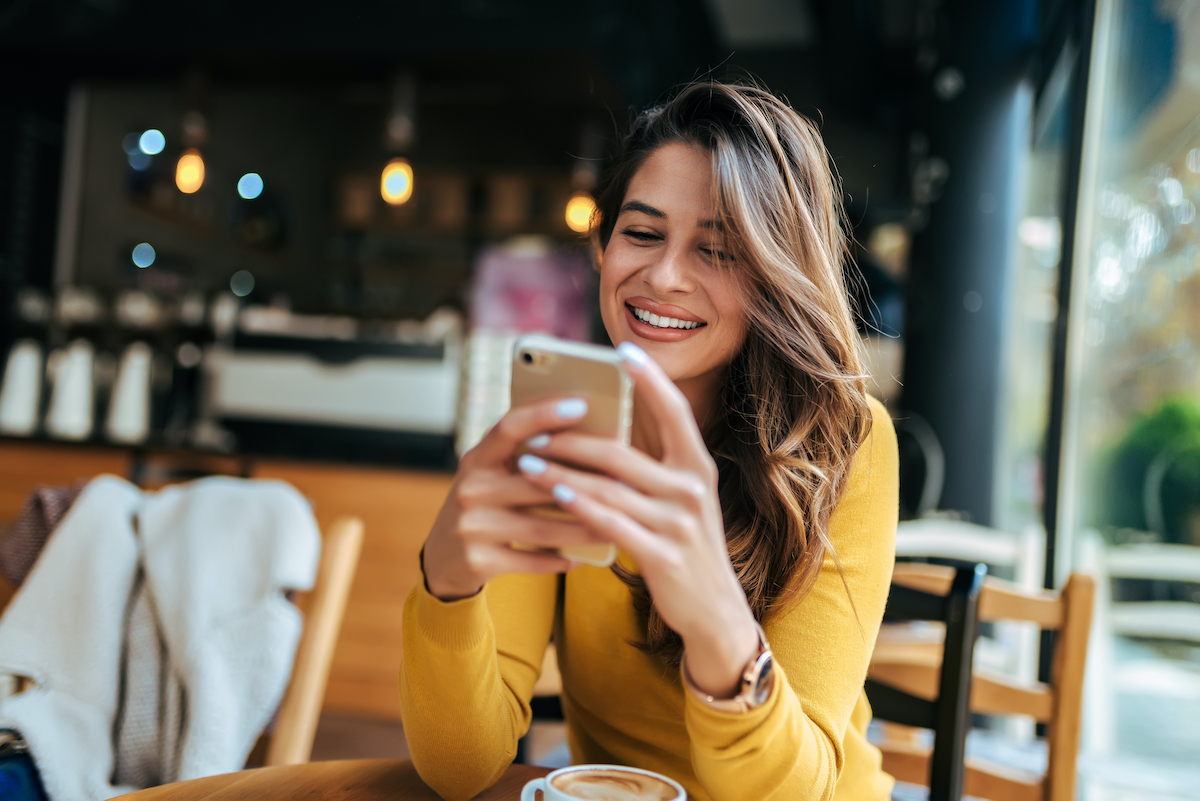You already know how important it is to protect your skin from ultraviolet light when you’re out in the sun. After all, exposure to UVA and UVB rays can lead to signs of premature aging as well as skin cancer.
But the sun isn’t your only source of damaging rays; it turns out it’s just as important to shield your skin from the blue light coming from all your screens.
What is Blue Light—and How Does it Affect Your Skin?
Blue light, also known as high energy visible (HEV) light, is a short wavelength, high-energy light on the visible spectrum that penetrates more deeply into skin than UVA and UVB rays, says Dr. Marie Hayag, MD, dermatologist and founder of Fifth Avenue Aesthetics in New York City.
While blue light primarily comes from the sun, it’s also emitted from smartphones, tablets, TVs, computers, and fluorescent bulbs, notes Dr. Hadley King, MD, a dermatologist in New York City.
According to data from Nielsen, the average American spends about 11 hours per day interacting with various forms of media, most of which involve looking at a screen. (And let’s be real: We’re all spending even more time than ever on our screens the last few months as we’ve had to socially distance from friends and family!)
Some blue light, when it comes from the sun, is good for your health. “Routine exposure to blue light, preferably from daylight, helps regulate our body’s sleep-wake cycle, improves our mood, keeps us alert, and can enhance memory,” explains Dr. King.
But too much of it—especially when it comes from screens—is not so great for your skin, according to recent research. Dr. King says that while blue light isn’t associated with skin cancer like UV rays are, it can cause skin to age prematurely, a concept known as photoaging. It can also lead to hyperpigmentation and may even play a role in melasma, which causes patches of discoloration, and age spots.
Dr. Hayag adds that high doses of blue light and long-term exposure to it can generate “reactive oxygen species,” which break down collagen and elastin, two building blocks of healthy, youthful-looking skin. That said, Dr. Hayag notes large, long-term clinical trials are needed to know just how much blue light damage contributes to aging and disease.
The Best Ways to Protect Your Skin from Blue Light
There are two easy steps you can take to protect your complexion from blue light.
First things first:
Wear Sunscreen, Even Indoors
Yep, it’s a good idea to slather on the SPF even if you won’t be outside. Per the Skin Cancer Foundation, you need to apply about a nickel-sized dollop to your face for adequate protection.
Keep in mind that not all sunscreens protect against blue light. “The chemicals and pigments used to filter UVA and UVB do not filter HEV light, therefore not all sunscreens include blue light in their standard broad-spectrum UVA/UVB coverage,” says Dr. King.
The best ingredients to look for in sunscreen to block blue light are mineral sun filters (like zinc oxide and titanium dioxide), iron oxides, and antioxidants (like vitamin C and green tea), says Dr. Hayag.
Here are some of the best sunscreens to protect against blue light, according to Dr. Hayag and Dr. King:
- Supergoop! Glow Sunscreen SPF 40: This makeup primer/sunscreen contains hyaluronic acid and vitamin B5 to boost moisture, sea lavender for antioxidant protection, and cocoa peptides to help shield your skin from blue light damage.
- MDSolarSciences Mineral Crème Broad Spectrum SPF 50 Sunscreen: This oil-free, matte sunscreen combines mineral UV protectors with antioxidants like vitamin C, green tea, and pomegranate extract that shield skin from environmental damage.
- Eucerin Sun Face Anti-Age Fluid SPF 30: The active ingredients in this sunscreen are Licochalcone A and Glycyrrhetinic acid, which Dr. King says have been proven to offer reliable protection from UVA, UVB, and HEV light.
- Exuviance Skin Caring BB Fluid with Sunscreen Broad Spectrum SPF 50 PA ++++: This sunscreen has the highest UVA rating according to the Japanese PA system, but still feels lightweight on the skin. Polyhydroxy acids in the formula help prevent collagen breakdown, while antioxidants vitamin E and green tea shield skin from free radicals, molecules in the environment that cause damage.
- TiZO Ultra Zinc Body and Face Sunscreen: With a hydrating mineral formula, this sunscreen is ideal for normal to dry skin types. Powerful antioxidants, vitamins C and E, offer environmental protection.
- Brush On Block Translucent Mineral Powder Sunscreen: This is a great pick for reapplication during the day because it won’t mess up your makeup. It offers mineral sun protection in the form of zinc oxide and titanium oxide and also has antioxidants.
- Skinceuticals Physical Fusion UV Defense SPF 50: This mineral sunscreen is formulated with artemia salina, a plankton extract that improves skin’s natural resistance to environmental stress. The sheer tint flatters all skin tones.
- Sunbetter Sheer SPF 56 Sunscreen Stick: This sunscreen protects against UVA, UVB, blue light, and infrared radiation. The stick formula is super-convenient (it’s great for especially hard to cover areas like your ears) and will never spill in your bag.
- Sunbetter Tone Smart SPF 68 Sunscreen Compact: You can apply this tinted powder over moisturizer and reapply throughout the day. The mineral formula protects against UVA, UVB, blue light, and infrared radiation.
Now, a word on all those products you’ve seen in Instagram ads claiming to block blue light:
While they might work, it’s easiest to use a blue-light-blocking sunscreen vs. applying a blue-light-blocking serum and then an SPF on top. “We should all be protecting our skin from UV rays on a regular basis, so a product that combines UV protection with blue light protection is ideal because it means you don’t need to add an additional product,” says Dr. King.
Use a Blue Light Shield on Your Devices
“One option is to install covers that block the blue light from smartphones, tablets, and computer monitors—these are readily available online,” says Dr. King.
Ocushield, a favorite of Dr. Hayag, has several filters to fit a variety of devices. You can also enable “night mode” settings on your devices permanently. “This significantly reduces the blue light in favor of harmless yellow light.”











Join the GloWell Community on Social!
Don't risk missing a single thing. Follow us on social and become part of the GloWell community.